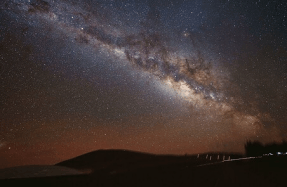
Enceladus was once considered to be of little interest to astronomers. As one of 83 known moons of Saturn and just 500 E kilometres (310 miles) in diameter, this cold, tiny world orbiting its gas giant host every 33 hours was largely overlooked as time-pressured astronomers focused their attention on other celestial bodies. It’s hard to blame them for doing so. Enceladus, discovered by William Herschel in 1789, had been visited by the two Voyager spacecraft, Voyager 1 and Voyager 2, in 1980 and 1981. Those flybys got as close as 90,000 kilometres (56,000 miles) from the moon’s surface, but they didn’t appear to find anything remarkable.
Instead it seemed as though Enceladus was simply frigid and inactive – asmall stark-white dot covered in water ice reflecting all of the sunlight striking it from far away. But as time went on, more and more astronomers began to take notice of this moon. “People were suspecting that something about Enceladus was off,” affirms Dr Antonin Affholder, a postdoctoral research associate at the University of Arizona. “It seemed that the E ring of Saturn was somehow made out of material that comes out of Enceladus.”
Astronomers suspected that the moon may have been struck by meteors or that ice volcanoes were spewing






